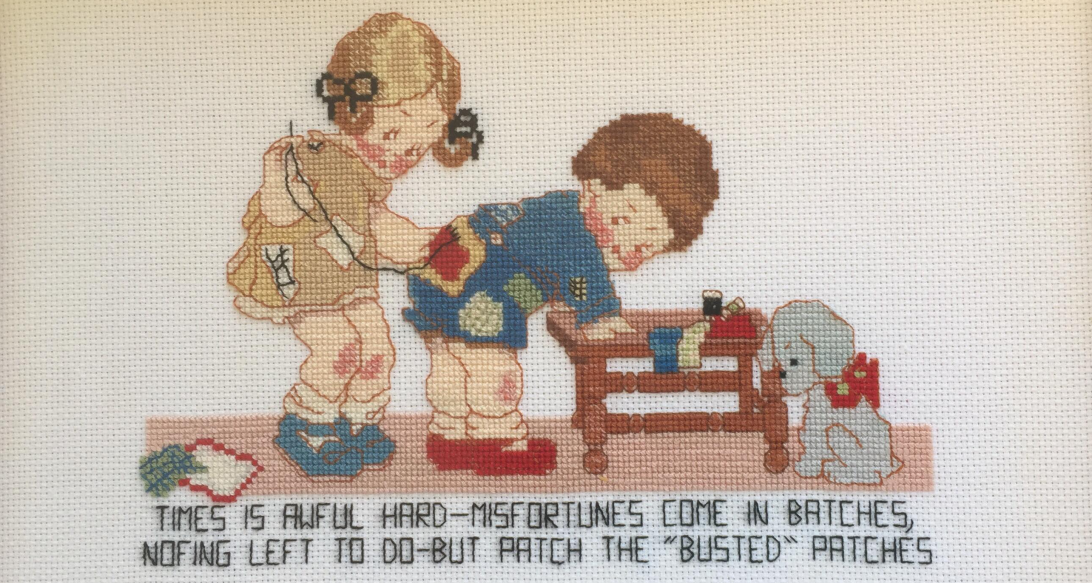Well, I’ve finally found a reason to write my own blog. I’m 38 years old, have two young kids and breast cancer.
— Laurie Kingston, not just about cancer, 12 January 2006
For health narrative researchers, cancer blogs hold a mine of 24-carat data. They offer a unique level of access to the intimate experiences of life with cancer and provide vivid insights into the diverse predicaments associated with the illness. This includes things such as the emotional impact of receiving a cancer diagnosis; the trajectory of treatments with adverse side-effects; the process of dealing with doctors and healthcare systems; the experience of having cancer in the context of family, work and social lives; and the everyday, mundane troubles that are experienced in the shadow of serious illness.
In research literature, cancer blogging is characterised as a form of affective labour that carries a therapeutic and emancipatory potential (McCosker & Darcy 2013). We are told of the “wounded blogger” – a play on the title of the classic The Wounded Storyteller by Arthur Frank (1995) – who writes about and through cancer as a way of making sense of their altered self, life and body (Coll-Planas & Visa 2016). Blogs are also thought to be a kind of subaltern tool for cancer patients to challenge medical authority and recover a sense of agency and control over their health outside of medical discourses and practices (McCosker & Darcy 2013). To quote Michel de Certeau, whose book The Practice of Everyday Life (1984) I’ve been reading, cancer blogging might be seen as a “tactic of the weak”.
There are also practical reasons why cancer patients take to blogging. One common reason cancer patients use blogs is to keep family and friends updated on their care and health status (Keim-Malpass & Steeves 2012). As somebody interested in family health communication, I am curious to know how family members respond to the blog posts written by their ill loved one, and what place the issues and topics made public in these posts have in their everyday cancer conversations. It seems that we have little understanding of the interplay and relation between online self-narration and actual, offline talk about cancer.
One thing we do know is that cancer blogging opens new and promising possibilities for improving healthcare services. A key benefit of cancer blogs is their capacity to provide information not otherwise available to oncologists and other clinicians about patient and family experiences outside of medical encounters (Gualtieri & Akhtar 2013). Cancer blogs also provide unsolicited narratives that are driven by the concerns of patients and their families rather than concerns of researchers or healthcare providers (O’Brien & Clark 2012). Cancer bloggers write about what is important to them in their own illness journeys. The challenge for healthcare providers is to find ways of using this sort of knowledge that is experiential, unbidden, and not produced under institutional conditions.
Given that cancer blogs circulate in public, they also play an important role in shaping what we know and think about cancer. Judy Segal (2012) has looked into how publicly-told cancer narratives are used to answer the question, “How shall I be ill?” She found that the stories that circulate most frequently and readily in public – the “triumphal” stories about staying positive and about cancer being a gift – are not helpful to many cancer patients and their families. This includes herself, as she powerfully explains in her newspaper editorial Cancer isn’t the best thing that ever happened to me. She writes:
…while some of us wish to find meaning in illness, some of us would prefer to turn away from the demand of coherence itself, and see cancer as meaningless-some terrible bad luck, adding up to nothing. Then, the question is not whether we can make room, in clinical settings and in domestic ones, for a sad or a hopeless story, but whether we can make room for no story at all (Segal 2012).
This paragraph stands out to me because it goes against the very foundational premise on which narrative research is based, that is: humans are fundamentally storytelling, meaning-making beings. Stephanie Trigg (2007), an academic and cancer blogger, reaffirms this notion: “So prevalent is the expectation that people who get sick turn into writers.”
What I take from this is that we need to be attentive to the diversity of meanings given to the experience of cancer. We must also acknowledge that there is a wide range of resources – both narrative and non-narrative in form – through which those experiencing cancer may express and explore their experiences, negotiate their identities and manage their daily lives. This can include, but is in no way limited to, the act of blogging.
References
Coll-Planas, G & Visa, M 2016, ‘The wounded blogger: Analysis of narratives by women with breast cancer’, Sociology of Health and Illness, vol.38, no.6, pp.884-898.
de Certeau, M 1984, The Practice of Everyday Life, trans. S Rendall, University of California Press, Berkeley.
Gualtieri, L & Akhtar, FY 2013, ‘Cancer patient blogs: how patients, clinicians, and researchers learn from rich narratives of illness’, Proceedings of the ITI 2013 35th International Conference on Information Technology Interfaces, Cavtat, Croatia, 24-27 June.
Keim-Malpass, J & Steeves, RH 2012, ‘Talking with death at a diner: Young women’s online narratives of cancer’, Oncology Nursing Forum, vol.39, no.4, pp.373-378.
McCosker, A & Darcy, R 2013, ‘Living with cancer: Affective labour, self-expression and the utility of blogs’, Information, Communication and Society, vol.16, no.8, pp.1266-1285.
O’Brien, MR & Clark, D 2012, ‘Unsolicited written narratives as a methodological genre in terminal illness: Challenges and limitations’, Qualitative Health Research, vol.22, no.2, pp.274-284.
Segal, J 2012, ‘Cancer Experience and Its Narration: An Accidental Study’, Literature and Medicine, vol.30, no.2, pp.292-318.
Trigg, S 2007, ‘I’ve written my talk: blogging, writing and temporality’, Luminous Gerberas, HEAT 15, pp.115-126.
